Research Article - (2023) Volume 31, Issue 1
Received: 31-Jan-2023, Manuscript No. IPQPC-23-15790; Editor assigned: 02-Feb-2023, Pre QC No. IPQPC-23-15790 (PQ); Reviewed: 16-Feb-2023, QC No. IPQPC-23-15790; Revised: 21-Feb-2023, Manuscript No. IPQPC-23-15790 (R); Published: 28-Jan-2023, DOI: 10.36648/1479-1064.23.31.06
Background: The main impetus behind the worldwide COVID-19 vaccination campaign in 2021 was to reduce the mortality attributed to SARS-CoV-2 infection in the preceding year. Nevertheless, rigorous analyses of the mortality benefits conferred by this massive vaccination effort have been lacking.
Methods: Statistics offers us an essential methodological approach for measuring the impacts of COVID-19 vaccination on public health. The mathematical relation between vaccinated alive groups can be repeated between vaccinated dead groups with relatively high statistical reliability because of the large population numbers involved. This method also confers greater statistical usefulness because it eliminates the Simpson effect.
Results: Calculations were performed for each of the following 5-4 week intervals: weeks 35-38 (2021), weeks 39-42 (2021), weeks 43-46 (2021), weeks 47-50 (2021), and weeks 50(2021)-1(2022). The results obtained confirm that the mortality of the vaccinated coronavirus infected groups was 14.5% higher on average than the mortality of non-vaccinated coronavirus infected groups.
Conclusion: Vaccinated infected groups appear to have higher average mortality than their non-vaccinated infected counterparts. The findings suggest the legitimacy of extending the statistics between vaccinated livings and vaccinated dead individuals for different age groups. Calculating the impact of COVID-19 vaccination on the mortality rate is a necessary step towards satisfying the first principle of medicine: “Primum non nocere”, “First do no harm”.
COVID-19 vaccination; Death rate; Sick status days; Excess mortality rate
The main public health rationale for the worldwide COVID-19 vaccination in 2021 was to reduce the large scale mortality that had been attributed to widespread infection by the novel coronavirus, SARS-CoV-2, beginning in the spring of 2020. The central research question to be answered in this paper is whether the COVID-19 vaccinations are saving more lives from COVID-19 infection, or whether these vaccinations are causing excess deaths due to lethal adverse events following the inoculation. In theory, COVID-19 vaccination should markedly reduce the number of COVID-19 related deaths in comparison to COVID-19 related deaths among the unvaccinated. Indeed, theoretical research published in 2021 estimated that COVID-19 vaccination will reduce the mortality rate [1]. The public health argument for ongoing vaccinations is based largely on this assertion.
Soon after the vaccination campaign began, however, many medical professionals argued that infection by the coronavirus would provide sufficient natural immunity to afford sufficient protection against subsequent infectious diseases in the form of COVID-19 Gazid and colleagues demonstrated that natural infection by SARS-CoV-2 confers antiviral adaptive immunity superior to that afforded by COVID-19 vaccination [2]. Furthermore, the healthcare workers expressed a logical, evidence informed concern that the COVID-19 vaccination, which was being mandated for hospital personnel in many countries, might lead to adverse outcomes for individuals previously infected by SARS-CoV-2. These concerns can be traced back to as early as 2012 when laboratory mice developed severe pulmonary immunopathology after being vaccinated and then exposed to the SARS coronavirus [3]. A decade later, other mouse data linked the mRNA lipid nano-particle based COVID-19 vaccine platform to the phenomena of adaptive immune cell exhaustion and non-responsiveness, both secondary to the chronic stimulation of immune-inflammatory pathways [4].
Well-designed human studies to address the question of a combined impact of coronavirus infection and subsequent COVID-19 vaccination are lacking. However, a recent study by Otto and colleagues concluded that COVID-19 infection can cause severe disease and death in vaccine recipients, particularly in older adults and those with comorbidities [5]. Given the fact that SARS-CoV-2 viral variants are highly transmissible and have already infected the majority of the population in western countries, such concerns regarding the combined impact of natural infection and subsequent vaccinations could have serious public health implications, particularly in light of ongoing COVID-19 booster campaigns worldwide.
Analyses of the clinical trial risks of vaccine associated adverse effects provide additional support for an undesirable impact on mortality. In a secondary analysis of serious adverse events (SAEs) reported in the placebo controlled group, phase III randomized clinical trials of the mRNA COVID-19 vaccines, the authors found a 36% higher risk of SAEs in the Pfizer vaccine group versus the placebo group, with 18 additional SAEs per 10,000 vaccinated [6]. The SAEs included death and various life threatening conditions, notably ischemic stroke, brain hemorrhage, and acute coronary syndrome. Notably, for both the Pfizer and Moderna clinical trials, the excess risk of SAEs was two to four times higher than the risk reduction for COVID-19 hospitalization. Most of these SAEs are relatively common events. Given the short follow-up observation periods for these trials, these risk estimates may be considered conservative.
Given these findings and concerns, it seems imperative that the medical scientific community devotes more attention to assessing the mortality risks resulting from the impact of COVID-19 vaccination in populations with prior or concurrent SARS-CoV-2 infection based on a positive PCR test result. Estimations of the number of COVID-19 deaths are, from an epidemiological perspective, relatively straightforward and unhampered by the complications of morbidity estimates. With population wide mortality as an outcome, there are no major confounders or “hidden variables” that could influence the results because, in free living populations exposed to SARS-CoV-2 and occupying similar geo-graphic regions, vaccinated and unvaccinated persons are living under the same general conditions, the same sets of risk factors evenly distributed. Vaccinated and non-vaccinated persons in a given region are consuming similar diets and are exposed to other similar environmental variables, notably air, and water.
Differences in the distribution of SARS-CoV-2 infection between those who have been vaccinated and those who have not been vaccinated are negligible [7]. Moreover, COVID-19 is spreading at a similar rate between unvaccinated and vaccinated: the apparent impact of vaccination on community transmission of circulating variants of the coronavirus was not significantly different from the impact among unvaccinated people [8]. For these reasons, population wide data on vaccination status for individuals of different age groups living in the same geographic region should be able to provide meaningful data on the mortality related effects of the vaccines in the context of SARSCoV- 2 infection. These epidemiological considerations enable us to perform a rigorous analysis of the impact of large scale COVID-19 vaccination on the mortality rate of vaccinated versus non-vaccinated groups.
For the purposes of the analysis, people who are living in a given region (state or country) may be designated as “alive”. In this group, we can further delineate “vaccinated” from “unvaccinated” persons. As people are dying within a given time frame, we can then also estimate total deaths and include subsets based on vaccination status.
Therefore, to assess the impact of vaccination on the mortality rate, we employ the following equation:

We calculate the proportional number of dead vaccinated as follows:

The proportional number for a given time period should always be larger than the statistical estimate of dead vaccinated, the product obtained from the calculation. In this case, vaccines are saving lives. If the proportional number is smaller than the statistical number, however, vaccines are increasing the death rate. This calculation should be done for each month of the year 2021 for five age groups: up to 20 years, from ages 20 to 40, from ages 40 to 60, from ages 60 to 80, and above age 80. In this way, the statistical problem known as the Simpson Effect (or Yule-Simpson Paradox, whereby an association between two variables in a population emerges, disappears or reverses when the population is divided into subpopulations) is excluded.
For the rigorous mathematical evaluation of COVID-19 vaccine efficacy, a recent BMJ editorial advocates the use of row data [9]. We can calculate the exact impact on the entire population in a given country and worldwide by utilizing data on how many deaths occurred in a given 4 week period have been at least once vaccinated (referred to by some authors as “ever vaccinated”). This would allow calculating the proportional number of “dead vaccinated” and comparing it with the actual statistical calculation of the number of dead vaccinated people.
Corporations and government agencies have provided useful data for this purpose. For each company or governmental agency, we can calculate the effectiveness of the COVID-19 vaccination by comparing the days of work with the sick status days in percentage in a given month or year is as follows:
Working days of vaccinated workers in one month………..100%
Sick days of vaccinated workers in one month……….. X%

Working days of non-vaccinated workers in one month………..100%
Sick days of non-vaccinated workers in one month……….. Y%

For a given company, we can easily see which percentage of sick days is higher. Let’s imagine we have a company with 100 employees, 50% of whom are vaccinated, and 50% of whom are not vaccinated. Vaccinated workers are protected from COVID-19, and should have a much smaller percentage of sick days than non-vaccinated workers. According to the COVID-19 vaccination doctrine percentage of sick days should be much smaller in the vaccinated group of people than in the non-vaccinated group of people.
It should be noted that neonatal mortality has emerged as another
factor contributing to changes in population mortality
rate. In Slovenia and worldwide, we observe highly increased
rates of neonatal mortality in 2022 compared to the previous
years. The first check that should be done in this context is the
possible influence of COVID-19 vaccination. The number of neonatal
deaths  is the sum of the following numbers:
is the sum of the following numbers:

Where X6 is the number of neonatal deaths where both parents are each three times vaccinated, where X5 is the number of neonatal deaths where one parent is three times vaccinated, and another parent is two times vaccinated (and so on), where X0 is the number of neonatal deaths where both parents have not been vaccinated. Using this model, we could see possible relations with the COVID-19 vaccination. EMA, VAERS, and the Yellow card reports on high numbers of vaccine’s side effects [10-12] are alarm bells for detailed analysis proposed in this article.
The proposed statistical analysis presented in this paper can verify the theoretical study of how many lives were saved by the vaccines in a particular country not only for ages above 60 but for the entire population.
Calculations of the Death Rate of the Infected Vaccinated Group and Infected Non-Vaccinated Group Using Official Data of the UK Health Security Agency
In the calculations, we compare the sample  of the entire
population with the sample
of the entire
population with the sample  in the dead group of persons.
in the dead group of persons.

Formula (1) is valid for statistics involving large sample sizes and
provides precise results. As medical authorities are hiding the
vaccination status of most dead person’s  , this is not feasible
at this time. We can, however, obtain official data in England
about the infected dead group
, this is not feasible
at this time. We can, however, obtain official data in England
about the infected dead group  and write following equation:
and write following equation:

The problem is that for non-infected vaccinated dead  , we
have no data because medical authorities are not allowing public
excess to information on vaccination status of dead persons.
, we
have no data because medical authorities are not allowing public
excess to information on vaccination status of dead persons.
Taking into account that vaccines do not impact on mortality,
the subgroup  and subgroup
and subgroup  have the same rate of mortality.
When both groups would be persons of different ages,
let’s say in the subgroup
have the same rate of mortality.
When both groups would be persons of different ages,
let’s say in the subgroup  most persons would be under 40
years and in the subgroup
most persons would be under 40
years and in the subgroup  most persons would be above
40 years, the Simpson effect could occur. This is not the case in
both groups the age distribution is very similar and Simpson’s
effect is excluded.
most persons would be above
40 years, the Simpson effect could occur. This is not the case in
both groups the age distribution is very similar and Simpson’s
effect is excluded.
Taking into account that vaccines do not impact on mortality,
the subgroup  and subgroup
and subgroup  have the same rate of mortality.
Producers of the vaccines are declaring that effectiveness
of vaccines is around 95% which means that the group’s
have the same rate of mortality.
Producers of the vaccines are declaring that effectiveness
of vaccines is around 95% which means that the group’s  ,
,  ,
,  , and
, and  have very similar mortality rates that are within the
value of 5%, so we write the following equation:
have very similar mortality rates that are within the
value of 5%, so we write the following equation:

Out of (7) follows:

Out of (8) follows equation:

The impact of the COVID-19 virus on the death rate in group  and in group
and in group  is the same. The proportional numbers
is the same. The proportional numbers  obtained in all five of the 28 day time periods are always smaller
than the statistical numbers. This provides strong proof that
vaccines are increasing the death rate. The statistics pertain to
a short time span (four weeks, 28 days); therefore the time variable
cannot significantly influence the results. In group
obtained in all five of the 28 day time periods are always smaller
than the statistical numbers. This provides strong proof that
vaccines are increasing the death rate. The statistics pertain to
a short time span (four weeks, 28 days); therefore the time variable
cannot significantly influence the results. In group  and
in group
and
in group  , people could die because of some unknown reasons.
Both groups were living under the same living conditions,
so some other cause of death would have the same impact on
both groups.
, people could die because of some unknown reasons.
Both groups were living under the same living conditions,
so some other cause of death would have the same impact on
both groups.
In population statistics for England, we obtained data for the
number of infected vaccinated dead and data of infected dead  . Using equation (9), we calculated the proportional number
of infected vaccinated dead
. Using equation (9), we calculated the proportional number
of infected vaccinated dead  and compared it with the
statistical number of actual infected vaccinated dead. Thus, we
obtained the decreased or increased mortality rate (percentage)
associated with or likely attributed to vaccination. The
proportional number
and compared it with the
statistical number of actual infected vaccinated dead. Thus, we
obtained the decreased or increased mortality rate (percentage)
associated with or likely attributed to vaccination. The
proportional number  is the number indicating no impact vaccination on the death rate. When 10% of the population is
vaccinated in the group of SARS-CoV-2-infected dead person’s
is the number indicating no impact vaccination on the death rate. When 10% of the population is
vaccinated in the group of SARS-CoV-2-infected dead person’s  , 10% will be vaccinated. When 20% of the population is vaccinated
in the group of SARS-CoV-2 infected dead person’s
, 10% will be vaccinated. When 20% of the population is vaccinated
in the group of SARS-CoV-2 infected dead person’s  ,
20% will be vaccinated, and so on. When 100% of the population
is vaccinated in the group of SARS-CoV-2 infected dead person’s
,
20% will be vaccinated, and so on. When 100% of the population
is vaccinated in the group of SARS-CoV-2 infected dead person’s  , 10% will be vaccinated. When 20% of the population is vaccinated
in the group of SARS-CoV-2 infected dead person’s
, 10% will be vaccinated. When 20% of the population is vaccinated
in the group of SARS-CoV-2 infected dead person’s  ,
20% will be vaccinated, and so on. When 100% of the population
is vaccinated in the group of SARS-CoV-2 infected dead
person’s
,
20% will be vaccinated, and so on. When 100% of the population
is vaccinated in the group of SARS-CoV-2 infected dead
person’s  , 100% will be vaccinated.
, 100% will be vaccinated.
Now we will compare the numbers of SARS-CoV-2 infected vaccinated
dead persons in official statistics with the SARS-CoV-2
infected vaccinated deaths proportional number  . The statistical
number of SARS-CoV-2 infected vaccinated dead persons must be lower than the proportional number
. The statistical
number of SARS-CoV-2 infected vaccinated dead persons must be lower than the proportional number  . In that case,
vaccines would be saving people’s lives. We can then calculate
how many SARS-CoV-2 infected persons have been saved from
death with vaccination for a given 4 week period, using the following
equation:
. In that case,
vaccines would be saving people’s lives. We can then calculate
how many SARS-CoV-2 infected persons have been saved from
death with vaccination for a given 4 week period, using the following
equation:

In this case, the statistical number of SARS-CoV-2 infected vaccinated
dead is bigger than the proportional number  , and
therefore vaccination has a negative impact on mortality rate. In
other words, the vaccination is stealing more lives than it saves,
i.e., more people have died prematurely because of getting vaccinated than would have occurred had they chosen not to get
vaccinated (Figure 1).
, and
therefore vaccination has a negative impact on mortality rate. In
other words, the vaccination is stealing more lives than it saves,
i.e., more people have died prematurely because of getting vaccinated than would have occurred had they chosen not to get
vaccinated (Figure 1).
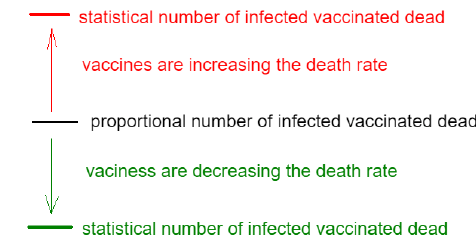
Figure 1: Comparing proportional number with statistical number.

The Calculation for Weeks 35-38 in Year 2021
Homogeneous distribution of all age groups can be seen in data
source. Below is the table from the UK data source [13]. We can
see that most of the vaccinated is elderly population. We calculate
COVID infected vaccinated deaths  =2447 by summing
colons “Received one dose” and “Second dose”. We calculate
=2447 by summing
colons “Received one dose” and “Second dose”. We calculate  =3165 by summing colon “Total” (Table 1).
=3165 by summing colon “Total” (Table 1).
| Death within 28 days of positive COVID-19 test by date of death between 35 and week 38 2021 | Total | Unlinked* | Not Vaccinated | Received one dose (1-20 days before specimen date) | Received one dose, ≥ 21 days before specimen date | Second dose ≥ 14 days before specimen date | Rates among persons vaccinated with 2 doses (per 100,000) | Rates among persons not vaccinated (per 100,000) |
|---|---|---|---|---|---|---|---|---|
| Under 18 | 6 | 2 | 4 | 0 | 0 | 0 | 0.0 | 0.0 |
| 18-29 | 20 | 1 | 15 | 0 | 0 | 4 | 0.1 | 0.4 |
| 30-39 | 42 | 1 | 30 | 0 | 0 | 11 | 0.2 | 1.0 |
| 40-49 | 92 | 3 | 52 | 0 | 7 | 30 | 0.5 | 3.1 |
| 50-59 | 251 | 5 | 125 | 0 | 12 | 109 | 1.5 | 12.2 |
| 60-69 | 419 | 4 | 121 | 0 | 21 | 273 | 4.8 | 22.4 |
| 70-79 | 804 | 4 | 151 | 0 | 26 | 623 | 13.4 | 61.2 |
| 80+ | 1531 | 10 | 189 | 1 | 43 | 1288 | 50.1 | 149.4 |
Table 1: Covid infected vaccinated deaths between weeks 35 and 38.
A “vaccinated” person in this calculation is the person that was vaccinated with the first dose or more. Let’s calculate the proportional number of dead vaccinated in England between weeks 35 and 38. In this time frame, there were 3165 COVID-19 deaths in the United Kingdom; 2448 of those persons had been vaccinated [13]. We see that the percentage of vaccinated UK people with one dose in this period is 65.1%. In 2021 the population of the United Kingdom was 56,191,000 people. 65.1% of the entire population is 36,580,300 people.

Officially declared vaccinated COVID dead persons between 35 and 38 weeks are 2447.
COVID infected vaccinated deaths declared=2447.
This means that 2448-2060=387 persons had prematurely passed away due to the vaccination in the period of week 35-38. Lost lives=2447-2060=387
The Calculation for Weeks 39-42, 2021
Let’s calculate the proportional number of dead vaccinated in England between weeks 39 and 42. In this period there were 2772 COVID deaths in the UK. 2270 of them have been vaccinated [13]. We see that the percentage of vaccinated people in the UK with one dose in this period is 66.1% [13]. The population of the UK was 56.191.000 people in 2021. 66.1% of the entire population is 37.142.200 people (Table 2).
| Cases presenting to emergency care (within 28 days of a positive test) resulting in overnight inpatient admission, by specimen date between week 39 and week 42 2021 | Total | Unlinked* | Not Vaccinated | Received one dose (1-20 days before specimen date) | Received one dose, ≥ 21 days before specimen date | Second dose ≥ 14 days before specimen date |
|---|---|---|---|---|---|---|
| Under 18 | 633 | 17 | 592 | 12 | 11 | 1 |
| 18-29 | 324 | 8 | 212 | 2 | 28 | 74 |
| 30-39 | 708 | 10 | 446 | 2 | 47 | 203 |
| 40-49 | 991 | 14 | 495 | 5 | 40 | 437 |
| 50-59 | 1139 | 13 | 447 | 1 | 46 | 632 |
| 60-69 | 1177 | 12 | 288 | 3 | 33 | 841 |
| 70-79 | 1642 | 1 | 195 | 3 | 34 | 1409 |
| ≥ 80 | 1724 | 2 | 157 | 0 | 38 | 1527 |
Table 2: Covid infected vaccinated deaths between week 39 in week 41.

Officially declared vaccinated COVID dead persons between 39 and 42 weeks are 2270.
COVID infected vaccinated dead declared=2270.
This means that 2270-1832=438 persons had prematurely passed away due to the vaccination in the period weeks 39-42:
Lost lives=2270-1832=438
The Calculation for Weeks 43-46, 2021
Let’s calculate the proportional number of dead vaccinated in England between weeks 43 and 46. In this 4 week period, there were 3726 COVID deaths in the UK. 2992 of them have been vaccinated [13]. We see that the number of vaccinated people in England in this period with the first dose is 67.4% [13]. The population of the UK was 56.191.000 people in 2021. 67.4% of the entire population is 37.872.700 people (Table 3). We use equation (7) and we get:
| Death within 28 days of positive COVID-19 test by date of death between week 43 and week 46 2021 | Total** | Unlinked* | Not Vaccinated | Received one dose (1-20 days before specimen date) | Received one dose, ≥ 21 days before specimen date | Second dose ≥ 14 days before specimen date |
|---|---|---|---|---|---|---|
| These data should be interpreted with caution. See information below in footnote about the correct interpretation of these figures. | ||||||
| Under 18 | 9 | 1 | 8 | 0 | 0 | 0 |
| 18-29 | 13 | 0 | 9 | 0 | 2 | 2 |
| 30-39 | 44 | 1 | 28 | 0 | 4 | 11 |
| 40-49 | 104 | 3 | 51 | 0 | 4 | 46 |
| 50-59 | 250 | 5 | 108 | 0 | 11 | 126 |
| 60-69 | 555 | 3 | 154 | 0 | 18 | 380 |
| 70-79 | 1025 | 6 | 163 | 1 | 9 | 846 |
| ≥ 80 | 1726 | 7 | 187 | 5 | 35 | 1492 |
Table 3: Covid infected vaccinated deaths between weeks 43 in week 46.

Officially declared vaccinated COVID dead persons between 43 and 46 weeks are 2992.
COVID infected vaccinated deaths declared=2992.
This means that 2992-2511=481 persons had prematurely passed away due to the vaccination in the period weeks 43-46:
Lost lives=2992-2511=481
The Calculation for Weeks 47-50, 2021
Let’s calculate the proportional number of dead vaccinated in England between weeks 47 and 50. In this period there were 2956 COVID deaths in the UK. 2140 of them have been vaccinated [13]. By 19 December 2021, the overall vaccine uptake in the UK for dose 1 was 68.2%, see page 3 COVID-19 vaccine surveillance report week 51 [13]. The population of the UK was 56.191.000 people in 2021. 68.2% of the entire population is 38.322.200 people (Table 4). We use equation (7) and we get:
| Death within 28 days of positive COVID-19 test by date of death between week 47 and week 50 2021 | Total** | Unlinked* | Not Vaccinated | Received one dose (1-20 days before specimen date) | Received one dose, ≥ 21 days before specimen date | Second dose ≥ 14 days before specimen date |
|---|---|---|---|---|---|---|
| These data should be interpreted with caution. See information below in footnote about the correct interpretation of these figures. | ||||||
| Under 18 | 4 | 0 | 3 | 0 | 0 | 1 |
| 18-29 | 14 | 0 | 9 | 0 | 1 | 4 |
| 30-39 | 53 | 0 | 43 | 0 | 1 | 9 |
| 40-49 | 113 | 3 | 60 | 0 | 4 | 46 |
| 50-59 | 244 | 5 | 116 | 1 | 10 | 112 |
| 60-69 | 453 | 5 | 141 | 0 | 9 | 296 |
| 70-79 | 725 | 8 | 169 | 1 | 22 | 525 |
| ≥ 80 | 1350 | 13 | 241 | 4 | 37 | 1055 |
Table 4: Covid infected vaccinated deaths between weeks 47 in week 50.

Officially declared vaccinated COVID dead persons (one dose or more) between 47 and 50 weeks are 2140.
COVID infected vaccinated deaths declared=2140
This means that 2140-2016=124 persons had prematurely passed away due to the vaccination in the period weeks 47-50:
Lost lives=2140-2016=124
The Calculation for Weeks 50, 2021-1, 2022
Let’s calculate the proportional number of dead vaccinated in England between week 51, 2021 and week 1, 2022. In this period there were 3893 COVID deaths in the UK. 2878 of them have been vaccinated. By 16 January 2022, the overall vaccine uptake in England for dose 1 was 68.9%, see page 3 [13]. The population of the UK was 56.191.000 people in 2021 68.9% of the entire population is 38.322.200 people (Table 5). We use equation (4) and we get:
| Death within 28 days of positive COVID-19 test by date of death between week 50 2021 and week 1 2022 | Total** | Unlinked* | Not Vaccinated | Received one dose (1 to 20 days before specimen date) | Received one dose, ≥ 21 days before specimen date | Second dose ≥ 14 days before specimen date |
|---|---|---|---|---|---|---|
| These data should be interpreted with caution. See information below in footnote about the correct interpretation of these figures. | ||||||
| Under 18 | 8 | 0 | 8 | 0 | 0 | 0 |
| 18 to 29 | 23 | 0 | 15 | 0 | 0 | 8 |
| 30 to 39 | 64 | 0 | 37 | 0 | 3 | 24 |
| 40 to 49 | 115 | 2 | 69 | 0 | 5 | 39 |
| 50 to 59 | 263 | 2 | 116 | 1 | 15 | 129 |
| 60 to 69 | 499 | 10 | 181 | 0 | 21 | 287 |
| 70 to 79 | 715 | 6 | 196 | 2 | 35 | 476 |
| 80 or over | 1487 | 11 | 302 | 4 | 44 | 1126 |
Table 5: Covid infected vaccinated deaths between week 50 (2021) and week 1 (2022).

Officially declared vaccinated COVID dead persons (one dose or more) between week 50, 2021 and week 1, 2022 are 2878. Coronavirus infected (test positive) vaccinated deaths declared= 2878
This means that 2878-2682=196 persons had prematurely passed away due to the vaccination in the period weeks 47-50: Lost lives=2878-2682=196
Below we have the results of all calculated periods:
Weeks 35-38: total coronavirus infected deaths are 3165, number of COVID infected vaccinated deaths is 2448, number of dead because of heavy adverse effects caused by vaccination is 388 which is 15% of coronavirus infected vaccinated deaths
Weeks 39-42: total coronavirus infected deaths are 2772, number of COVID infected vaccinated deaths is 2270, number of dead because of heavy adverse effects caused by vaccination is 438 which is 19% of coronavirus infected vaccinated deaths
Weeks 43-46: total COVID infected deaths are 3726, number of COVID infected vaccinated deaths are 2992, number of dead because of heavy adverse effects caused by vaccination is 481 which is 16% of coronavirus infected vaccinated deaths
Weeks 47-50: total coronavirus infected deaths are 2956, number of COVID infected vaccinated deaths is 2140, number of dead because of heavy adverse effects caused by vaccination is 124 which is 6% of coronavirus infected vaccinated deaths
Weeks 50(2021)-1(2022): total coronavirus infected deaths are 3893, number of COVID infected vaccinated deaths is 2878, the number of dead because of heavy adverse effects caused by vaccination is 196 which is 7% of coronavirus infected vaccinated deaths.
In 20 weeks, the total number of deaths among persons who had tested positive for SARS-CoV-2 infection was 16.505. The total number of the COVID-19 test positive vaccinated deaths is 12.728. The total number of deaths because of heavy adverse effects caused by vaccination is 1627 persons. This means in the group of COVID test positive vaccinated deaths which is 12.728 persons, 12.8% have died because of heavy adverse effects. By including all time periods in the calculation, we will have a more comprehensive estimate.
The total number of deaths of the COVID-19 test positive people that died in 20 weeks was 12.728. The total proportional number of vaccinated infected people that died was 11.101. Thus, in the group of test positive vaccinated deaths, there was a 14.5% higher rate of mortality than in the group of COVID positive unvaccinated considering vaccines would not have any influence on the death rate. Our data indicate that infected vaccinated persons have a 14.5% higher probability of dying (ostensibly from prior or concurrent COVID- 19 infection, or vaccination, or both) than infected unvaccinated persons.
According to the official narrative, vaccines are saving lives, which mean the number of coronavirus infected vaccinated deaths statistically recorded should be significantly lower than the proportional calculated number of the coronavirus infected vaccinated deaths. As shown in Table 1, our results indicate that the opposite is true. The statistical number of the coronavirus infected vaccinated deaths is significantly higher than the calculated proportional number of coronavirus infected vaccinated deaths, which means that infected vaccinated people are dying at a higher rate than their infected unvaccinated counterparts, presumably because of adverse effects of the vaccines themselves (Figure 2).
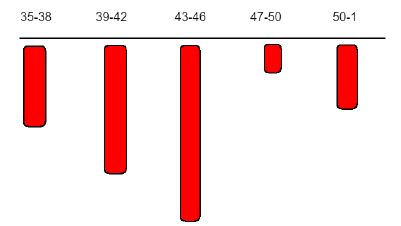
Figure 2: Obtained results.
Evaluation of Obtained Results
In principle, the gene based COVID-19 vaccines (mRNA vaccines and adenovirus vector vaccines) were designed to significantly decrease the number of deaths associated with SARS-CoV-2 infection when compared to the number of deaths among infected unvaccinated persons. However, the present analysis points to a net negative benefit in terms of mortality reduction. Based on UK population data at five 28 day intervals in 2021-2022, we found that infected vaccinated persons have a 14.5% higher probability of dying than infected unvaccinated persons.
Our findings are limited in scope but of major statistical relevance. The proposed statistical approach offers a highly reliable estimate of how the COVID-19 vaccination campaign has been impacting the mortality rate for entire populations, apparently adding in a major way to deaths attributed to COVID-19. The relation between the “vaccinated corona virus infected deaths” and “non-vaccinated coronavirus infected deaths” in a short 4 week period is a statistically viable measure of the unfavorable impacts of these immunizations on COVID-19 mortality. Based on the rules of statistics, if we were to calculate the relationship between the proportional and real number of vaccinated COVID-19 deaths for all other time periods, we would not expect to see results that contradict the present findings. We are therefore inclined to propose that COVID-19 vaccines are causing lethal adverse effects. It seems reasonable to surmise that such impacts on mortality are not only relevant to England but also to other countries where the vaccines have been adopted on a massive scale.
To widen the scope of this research, we could calculate the mortality impacts on the entire population in England and worldwide. This would require data on how many people who died in a given 4 week period have been at least once vaccinated (or ever vaccinated). This would allow calculating the proportional number of “dead vaccinated” and comparing it with the actual statistical number of deaths. Because the proposed calculation might be difficult to understand for medical professionals, here is an example: Let’s imagine that in a given country, in January 2024, we will place a red bracelet on the hands of 30% of the entire population. In every age group, exactly 30% of people will have red bracelet. We follow a number of deaths in the ensuing months and see that exactly 30% dead people in each age group will have a red bracelet. This is how statistics work out when applied to large population sizes. We can imagine that COVID-19 vaccine is a red bracelet and has no impact on the health of the vaccinated person. On this plausible sup-position, we calculate a proportional number of deaths. Comparing the proportional number of deaths with the real statistical number of deaths shows us the real impact of vaccination on the population death rate.
Calculation of the impact of COVID-19 vaccination on increased mortality is so straightforward that it could be done by anyone with middle school mathematics ability who has an interest in assessing and monitoring the mortality impact. Most of the published statistics pertaining to COVID-19 vaccine effectiveness are avoiding this calculation because of immense pressures on the medical profession to hide the disastrous results of the vaccination program; however, it is only a matter of time before the truth is revealed. Human society is evolving rapidly and will not support the unbearable falsehoods concerning how COVID-19 vaccines are impacting human lives.
In this simple effective calculation, the entire population of a given country is divided into five age groups: 0-20 years, 21 to 40 years, 41 to 60 years, 61 to 80 years, and over 80 years. Each age group (total number-TN) consists of two sub-groups: vaccinated subgroup (VA) and unvaccinated subgroup (UN):

Where TN stands for all people in a particular group, VA stands for vaccinated persons and UN stands for unvaccinated persons. A certain number of people die each month in each age group:

Where D means all dead people in a certain age group, Dva means dead vaccinated people and Dun means unvaccinated dead people. Unvaccinated people are not protected from the deadly virus COVID-19 and therefore should die in greater numbers. The calculation of mortality expressed in percentage in the vaccinated subgroup in a certain age group for each month is calculated as follows:

The calculation of the mortality in percentage in the unvaccinated subgroup in a certain age group for each month is as follows:

For each month, it is possible to accurately calculate the mortality of the vaccinated subgroup in a certain age group and the mortality of the unvaccinated sub- group within a certain age group. Avoiding these calculations is avoiding the fact that COVID-19 vaccination has done major harm to public health worldwide. Carrying out these calculations on a monthly basis and informing the medical community and general public about them is the main obligation of every medical journal. A simple calculation at the end of each monthly report would provide a concise updated analysis of the COVID-19 vaccination impact on the mortality rate for that particular month. Such calculations would reveal the true impact of COVID-19 vaccinations. This must be done immediately in order to preserve the first principle of medicine: “Primum non nocere”.
The results obtained by the present analysis would seem to reinforce the findings of Tojersen and colleagues, who reported that the COVID-19 vaccinations have led to increased death rates among the elderly population [14,15]. A report from the insurance company One America is similarly discouraging, with actual data from the latter half of 2021 indicating an unprecedented 40% increase in death rates for individuals aged 18 to 64 when compared to the pre-pandemic period [16]. According to the company’s CEO, this represented the highest mortality rate in the history of insurance records, which entail extensive death data collection annually. Previous large scale catastrophes had increased death rates by no more than 10% [16]. It seems increasingly clear that COVID- 19 vaccination programs are not living up to the “safe and effective” terms they had promised to the general public.
Other concerning data come from German public health authorities showing that “sudden death of unknown cause” increased dramatically in the past two years. In 2021 and 2022, according to official German statistics, approximately 14,800 people died, compared to an annual average of only 1,600 people in the previous five years. According to the report from The Group in the German parliament in December 2022, “the sudden death of unknown cause” increased by about 560% in 2021 and 2022 over previous years [17]. These data are sounding off alarms that something went terribly wrong with the public health response to COVID-19 (Figure 3).
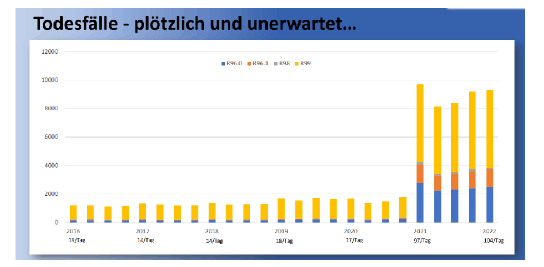
Figure 3: Increase of sudden death cause unknown in Germany in 2021 and 2022.
Data from Slovenia’s National Institute of Public Health (NIJZ) are also ringing alarm bell. Pulmonary embolism increased by about 36% from 2021 to 2022. In that same two year period, chronic myocarditis increased by about 65%, while viral pneumonia increased by about 149% [18] (Figures 4-6).
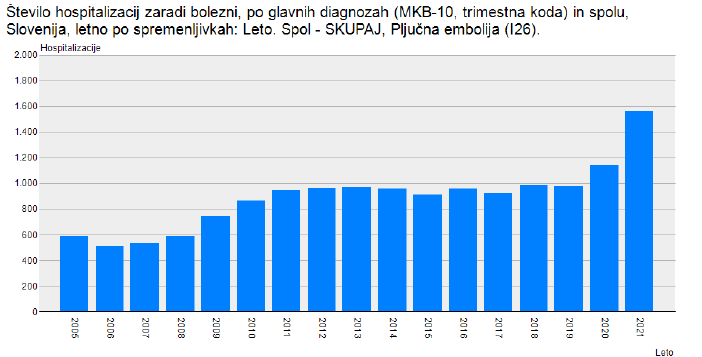
Figure 4: Increase of pulmonary embolism in 2021.
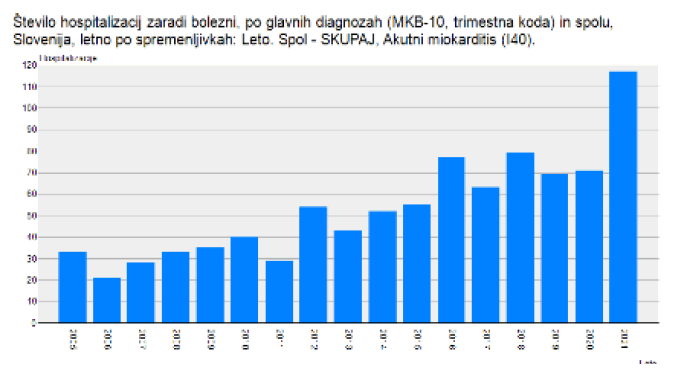
Figure 5: Increase of chronic myocarditis in 2021.
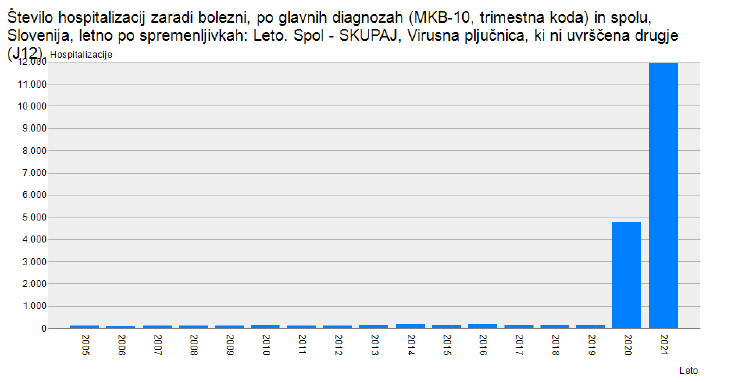
Figure 6: Increase of viral pneumonia in 2021.
The status of the vaccination of these patients is not publicly known, which makes it impossible to calculate the exact impact of COVID-19 vaccination on the increase of these diseases. Despite several calls of researchers from different fields, NIJZ is keeping these data confidential. It is unprecedented that a scientific organization of public health is hiding data that could prove the danger of a given medical treatment. In the lives of people in Slovenia, the only big change of life in 2021 was massive COVID-19 vaccination, so the vaccines represent the most logical candidate for the increased morbidity and mortality. Only when the data become publicly available will we be able to carry out calculations of exact per cent of patients that were vaccinated.
Numbers of Vaccination are Coinciding with the Numbers of Death Rate
Below is the official statistics of excess mortality for November 2022 for European countries (Figure 7).
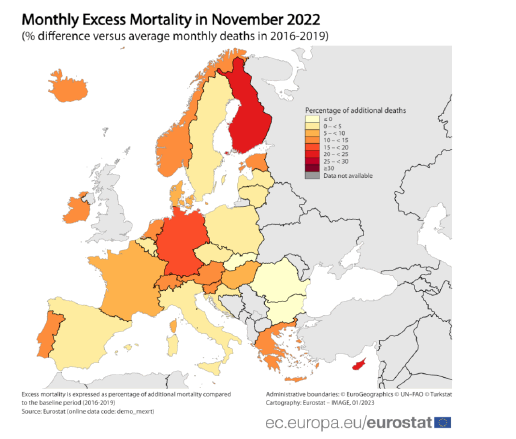
Figure 7: Excess mortality in EU in November 2022.
“Excess mortality rates continued to vary across the EU Member States. All Member States registered increases in excess mortality, except for Romania (-6%), Bulgaria (-3%) and Slovakia (-2%), which recorded no excess deaths. Italy recorded few excess deaths, with its rate standing at +0.5%. After these Member States, the next lowest rates were recorded in Belgium and Lithuania (both +1%), Sweden (+2%), and Poland and Spain (both +3%), all less than half of the EU average. The most affected countries in November 2022 were Cyprus and Finland, which recorded excess mortality rates of +24% and +21%, respectively. Germany also recorded a high rate of +16%” [19].
Calculations on the 14.5% excess mortality rate are supported by official data of the EU, which confirm that excess mortality is higher in countries where the percentage of vaccination is higher. In general, we can see, the higher the percentage of vaccination in a given country, the higher is the excess mortality. We could have a better overview if we would have data on excess mortality for the entire year 2022 per given country (Table 6).
| Country | Death rate | Percentage of vaccinated with at least one dose |
|---|---|---|
| Romania | -6% | 42% |
| Bulgaria | -3% | 30% |
| Slovakia | -2% | 48% |
| Lithuania | +1% | 70% |
| Belgium | +1% | 81% |
| Latvia | +1.3% | 70% |
| Sweden | +2% | 76% |
| Spain | +3% | 88% |
| Poland | +3% | 60% |
| Hungary | +6.7% | 66% |
| Swiss | +11.6% | 71% |
| Slovenia | +14.7% | 61% |
| Germany | +16% | 78% |
| Finland | +21% | 82% |
| Cyprus | +24% | 56% |
Table 6: Mortality rate in some European countries in October 2022.
Calculations on 14.5% excess mortality rate are supported by official data of “Our World in Data” which confirm that excess mortality is higher in countries where the number of vaccinations per 100 habitants is higher. Further on these data are confirming that with the increase in the number of vaccinations in a given month, excess mortality is increasing too. With the decrease in the number of vaccinations, excess mortality is decreasing [20] (Figures 8-27).
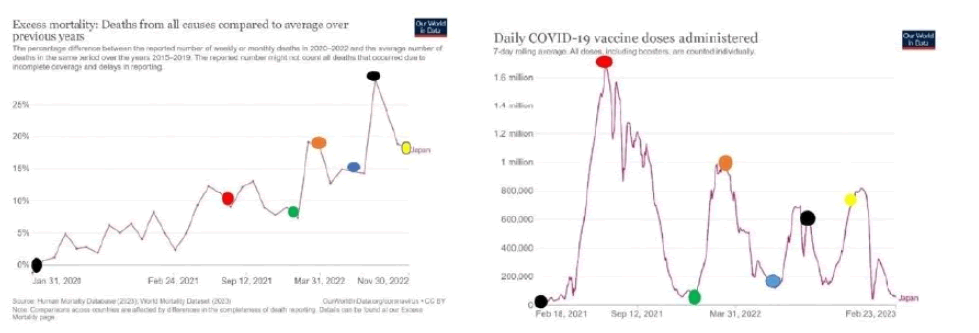
Figure 8: Excess mortality and number of daily vaccinations in Japan.
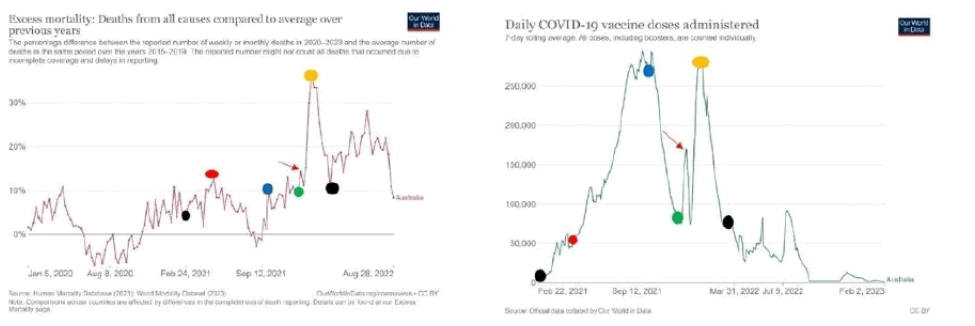
Figure 9: Excess mortality and number of daily vaccinations in Australia.
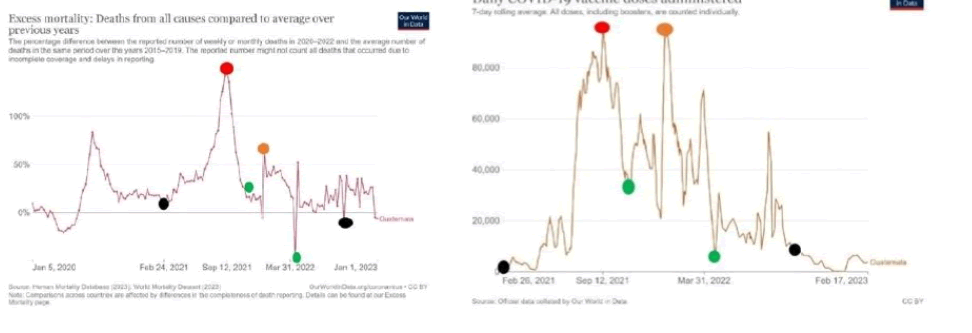
Figure 10: Excess mortality and number of daily vaccinations in Guatemala.
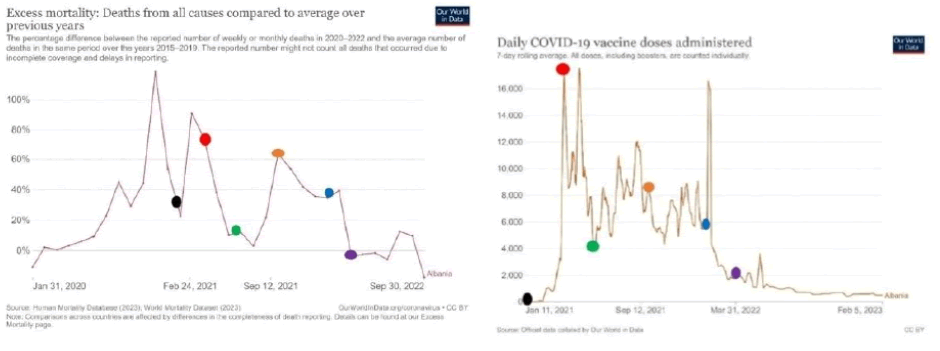
Figure 11: Excess mortality and number of daily vaccinations in Albania.
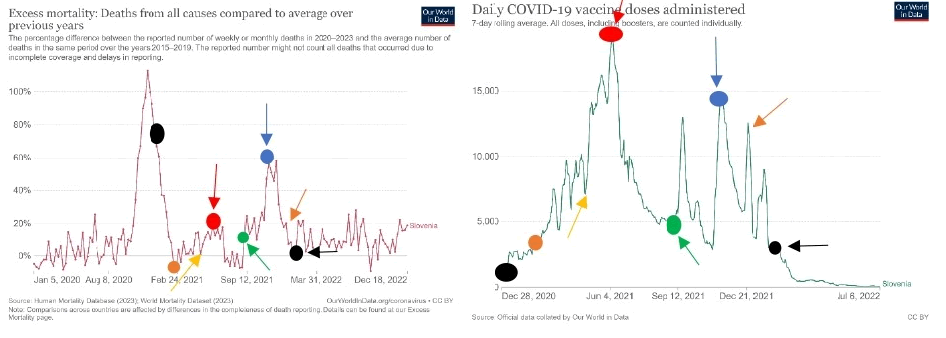
Figure 12: Excess mortality and number of daily vaccinations in Slovenia.
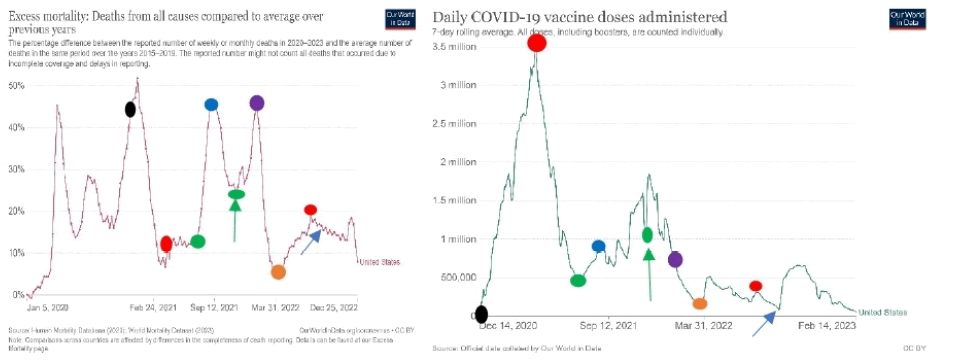
Figure 13: Excess mortality and number of daily vaccinations in USA.
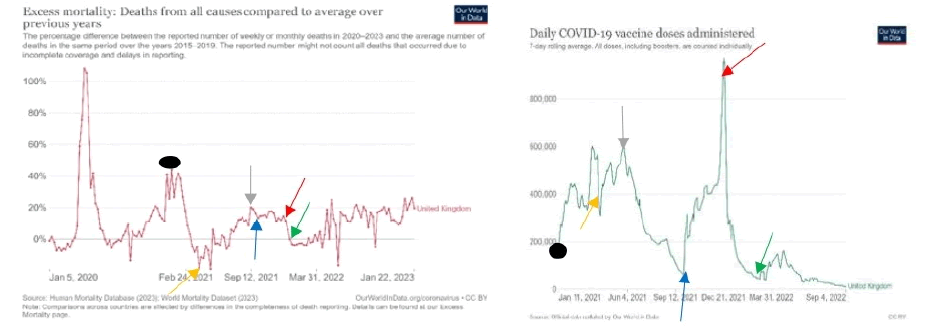
Figure 14: Excess mortality and number of daily vaccinations in UK.
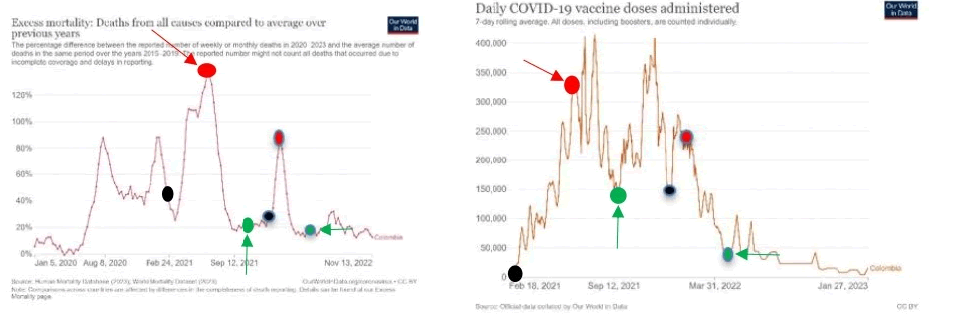
Figure 15: Excess mortality and number of daily vaccinations in Colombia.
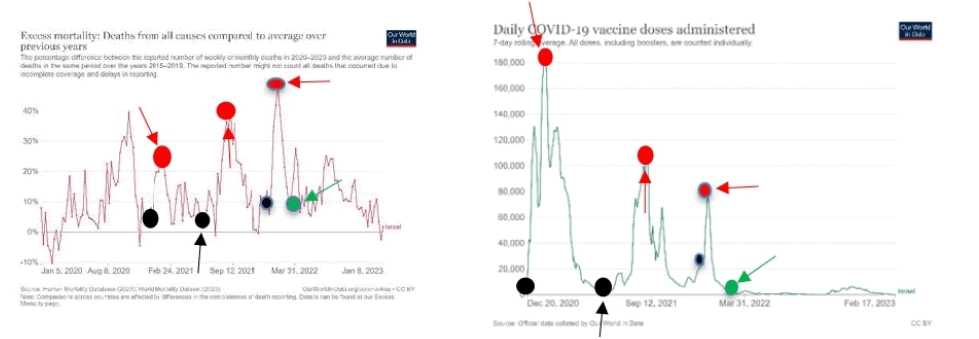
Figure 16: Excess mortality and number of daily vaccinations in Israel.

Figure 17: Graphs of vaccination and excess mortality in Germany.
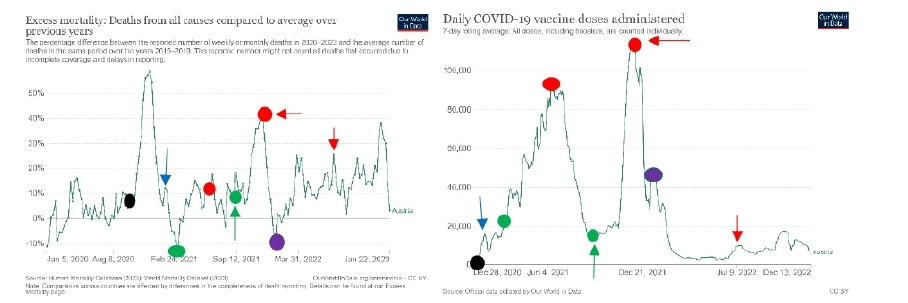
Figure 18: Graphs of vaccination and excess mortality in Austria.
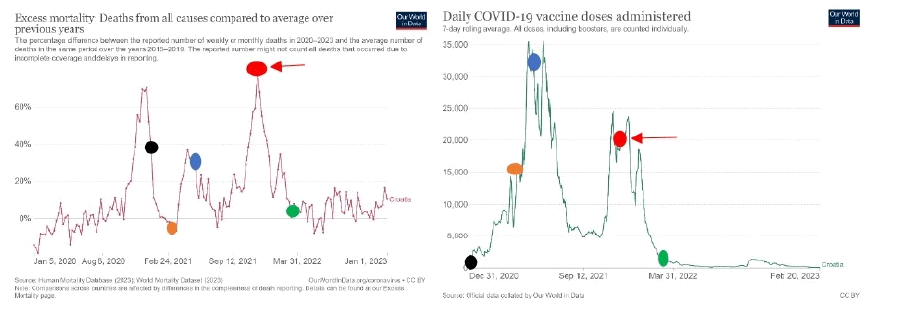
Figure 19: Graphs of vaccination and excess mortality in Croatia.
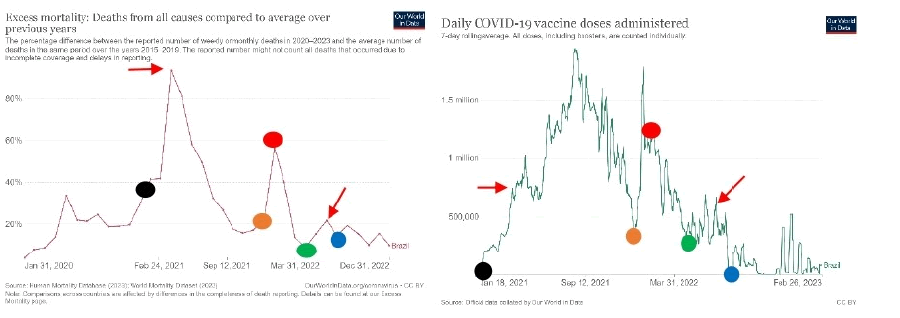
Figure 20: Excess mortality and number of daily vaccinations in Brazil.

Figure 21: Excess mortality and number of daily vaccinations in Finland.
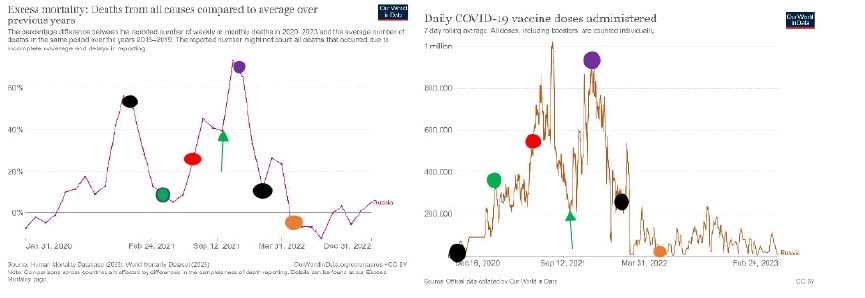
Figure 22: Excess mortality and number of daily vaccinations in Russia.
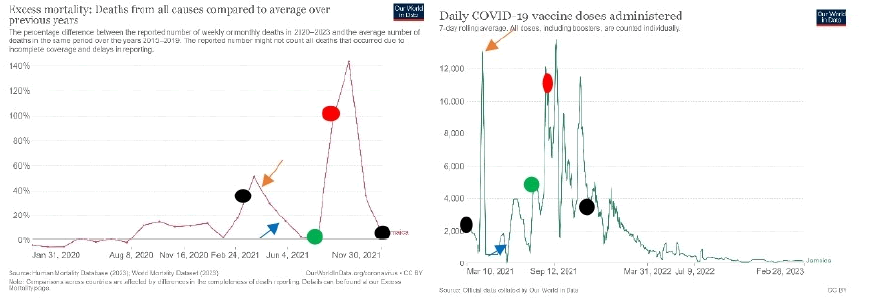
Figure 23: Excess mortality and number of daily vaccinations in Jamaica.
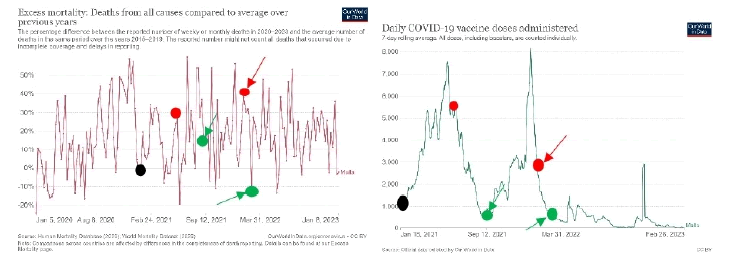
Figure 24: Excess mortality and number of daily vaccinations in Malta.

Figure 25: In Turkey, a high mortality rate after an intense period of vaccination

Figure 26: In Monaco, a high mortality rate period happened after an intense period of vaccination.
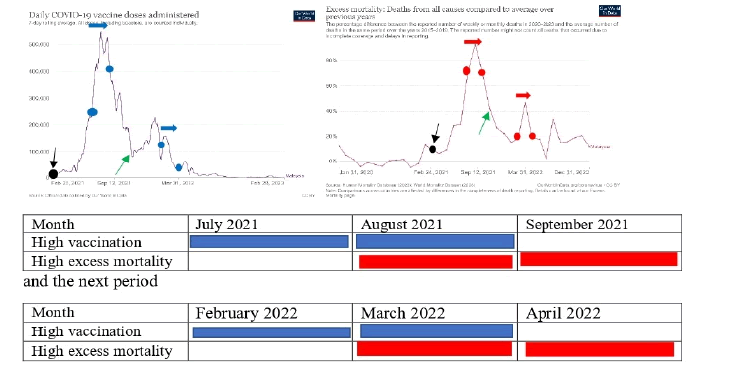
Figure 27: In Malaysia, a high mortality rate periods happened after an intense periods of vaccination.
Slovenia is a country where in a given time period, vaccination has increased and mortality has decreased. This happened between 28th December 2020 (dark spot) and 14th February 2021 (light brown spot). After 14th February 2021 with the increased vaccination, the mortality rate is increasing (Figure 12 above).
The USA is a country where in a given time period, vaccination has increased and mortality has decreased. This has happened between 20th December 2020 (dark spot) and 12th April 2021 (red spot). From 9th July 2021 (green spot) the graphs show clearly that with the increase in vaccination, the rate of mortality has increased. The USA is the only country where the graph in increased mortality and the number of vaccinations are getting aligned in July 2021. In all countries, we study, this occurs already in March 2021, see Figures below.
The UK is also a country where in a given time period at the beginning of vaccination with the increase of the daily number of vaccination, mortality has decreased. This happened between 11th January 2021 (dark spot) and 22nd March 2021 (orange arrow). After 22nd March with the increase in vaccination; the mortality rate is also increasing (Figures 14 above).
Germany is also a country where in a given time period at the beginning of vaccination with the increase of the daily number of vaccination, mortality has decreased. This happened between 28th January 2020 (dark spot) and 7th March 2021 (green spot). After 7th March 2021 with the increase of vaccination mortality rate is also increasing (Figure 17 above).
Austria is also a country where in a given time period at the beginning of vaccination with the increase of the daily number of vaccinations, mortality has decreased. This happened between 29th December 2020 (dark spot) and 7th March 2021 (green spot). After 7th March with the increase in vaccination, the mortality rate is also increasing. The last red vertical arrow on the left graph is showing excess mortality on 24th July 2022. The last red vertical arrow on the right graph is showing the peak of vaccination 15th July 2022 (Figure 18 above).
Croatia is also a country where in a given time period at the beginning of vaccination with the increase of the daily number of vaccination, mortality has decreased. This happened between 31th December 2020 (dark spot) and 7th March 2021 (light brown spot). After 7th March with the increase in vaccination, the mortality rate is also increasing.
When we compare graphs that show the mortality rate and the number of vaccinations per day and can see that graphs for all countries have similar shapes. On the left, we see decreased mortality rate. On the right, we see the number of vaccinations in time. We can see that the mortality rate is increasing with the increasing number of vaccinations per day. We can see that the mortality rate is decreasing with the decreasing number of vaccinations per day. In a few countries, there is an exception in the first two months of vaccination, with the increase of vaccination mortality rate is increasing.
COVID vaccination was introduced in 2021 and 2022 because of the high excess mortality rate in 2020 that was caused by COVID-19. People that are vaccinated are protected from COVID-19 and should have a lower mortality rate. The lower number of vaccinated in a given month should increase the mortality rate, but we see that it is the opposite. This proves that COVID vaccines are increasing the death rate.
In general, to the official narrative, we should have the opposite situation. In the time period where vaccination is increasing, we should have a lower rate of mortality and in time periods where vaccination is decreasing, we should have a higher mortality rate. We have the opposite situation that is confirming that COVID vaccines are increasing the mortality rate.
In Figure 24 in the graph on the right, we see that the highest death rates (red dots) occurred after the peak of vaccination. Therefore, we decided to verify the direct causal correlation between maximum mortality in a given period and vaccination intensity in the preceding period, see the three figures below. (Figures 25, 26 and 27).
The first blue arrow on the left represents the beginning of intense vaccination period between 1st July and 31st August 2021. The first red arrow on the right represents the beginning of a high mortality period between 1st August 2021 and 30th September 2021. The second blue arrow on the left represents the beginning of intense vaccination period between 1st February and 31st March 2022. The second red arrow on the right represents the beginning of a high mortality period between 1st March 2022 and 31st April 2022.
The mathematical algorithm of correlation between mortality
rate and vaccination is following. Let’s take that  is the number
of vaccinations in the time period of 30 days.
is the number
of vaccinations in the time period of 30 days.  is the
number of vaccinations in the time period of next 30 days.
is the
number of vaccinations in the time period of next 30 days.
When  =
= , the numbers of excess deaths (ED) in both time
periods are close to equal:
, the numbers of excess deaths (ED) in both time
periods are close to equal:

When  <
< , the numbers of excess deaths are as follows:
, the numbers of excess deaths are as follows:

When  >
> , the numbers of excess deaths are as follows:
, the numbers of excess deaths are as follows:

If vaccines saved lives, the situation would be the opposite:

Unfortunately, this is not the case. The rule is general, with only a few exceptions in some countries in the first two months of vaccination. In general, analysis is confirming that vaccines cause “sudden deaths with unknown reason” in the time frame of 30 days. That’s why the increase in vaccination, in general, has increased the mortality rate.
The algorithm could be used to carry out detailed computer analysis where all data-bases [20] will be evaluated. This will give us the final result about the impact of vaccination on the mortality rate.
The Intensity of Vaccination with Boosters Coincides with the Mortality Rate
We used data sources [20] and we compared graphs of vaccination with boosters administrated per 100 people with the graphs of excess mortality rate. The analysis confirmed the direct causal relation between covid vaccination with boosters and increased mortality rate (Figures 28-31).
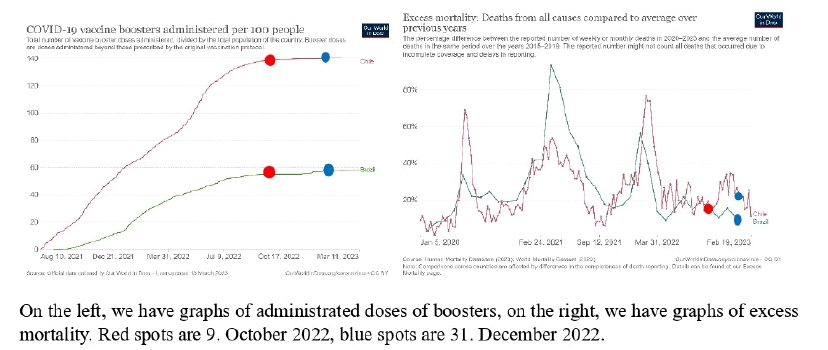
Figure 28: Intensity of vaccination with boosters and excess mortality in Chile and Brazil.
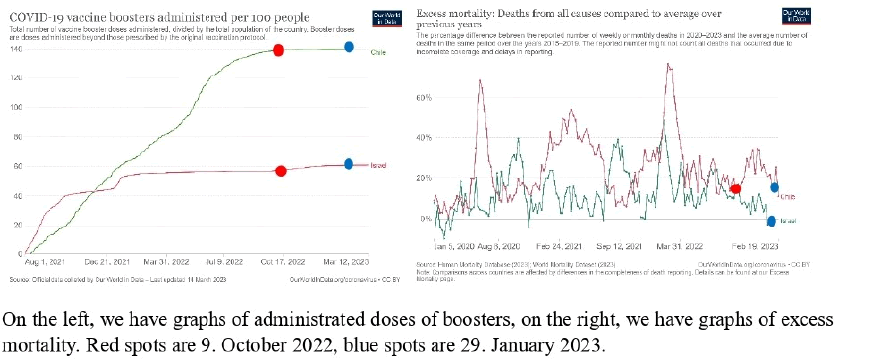
Figure 29: Intensity of vaccination with boosters and excess mortality in Chile and Israel.
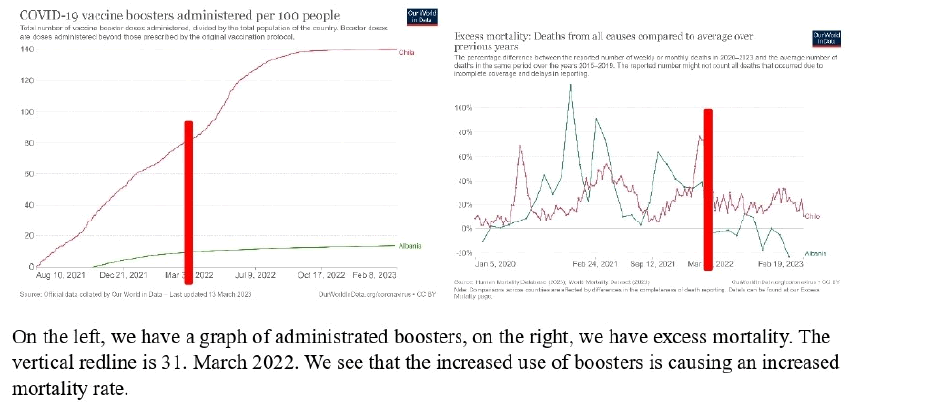
Figure 30: Intensity of vaccination with boosters and excess mortality in Chile and Albania.
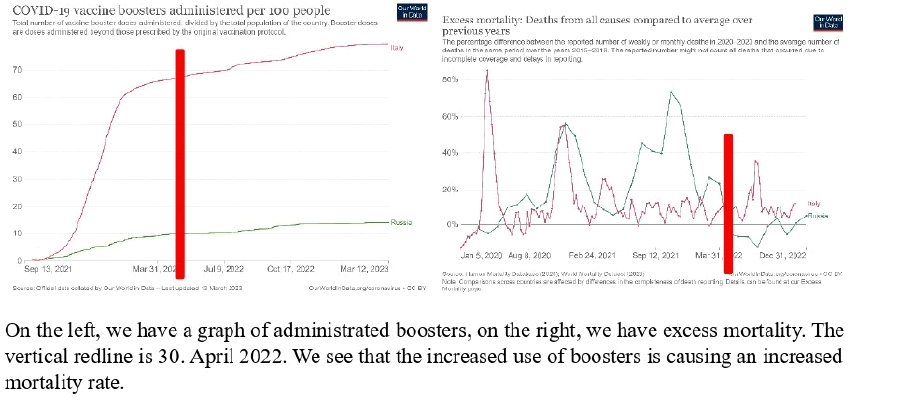
Figure 31: Intensity of vaccination with boosters and excess mortality in Italy and Russia.
COVID-19 vaccination policies have been widely adopted on the supposition that COVID-19 vaccination was “safe and effective”, a slogan that was widely circulated, even in the medical literature. These present calculations suggest that, rather than “safe and effective”, COVID-19 vaccination has done irreparable harm to the health and lifespans of billions of people worldwide. Based on calculations performed for each of five 28 day intervals in 2021 and 2022, our results indicate that the mortality of the vaccinated coronavirus infected groups was 14.5% higher on average than the mortality of non-vaccinated coronavirus infected groups.
The findings of this analysis warrant an extensive reassessment of UK Health Security Agency data on COVID-19 related mortality and vaccination status for different age groups in England. Every UK County has accurate data on vaccination status, including information on who was vaccinated, how many times they were vaccinated, and who was not vaccinated. As long as the person is alive, vaccination status can be verified. After death, however, vaccination status is usually lost or disregarded, and yet death rate comparisons between the vaccinated and non-vaccinated groups offer us the most reliable evidence for the vaccination’s relative impact on mortality. Similarly, it is common practice to hide the vaccination status of sick people, whether the diagnosis is COVID-19 or other illnesses. When a person gets sick and visits his or her doctor, the physician typically will not ask about COVID-19 vaccination status. In this way, the potentially catastrophic impact of COVID-19 vaccination, now and in the future, continues to remain obscure.
How this horrible stain on public health and the medical system has been allowed to persist is a complex question. By the end of 2020, all of the established security measures and scientific standards for public health responsiveness to a pandemic had been subverted. Early treatment protocols using low-cost, effective off label drugs were banned, thanks to an intensive misinformation campaign orchestrated by the vaccine establishment. Nutritional and lifestyle measures for bolstering antiviral immunity were ignored by the mainstream medical community. In clinical practice, the new rules for treatment and management of COVID-19 related disease were not evidence based but instead were driven primarily by political and financial interests that have their roots in the medical pharmaceutical industrial complex. The modern medical system of many westernized countries has forsaken its ethical center, which is best summarized by the ancient Latin dictum of Primum Non Nocere, “First, Do No Harm”. The only way for medical doctors to reclaim the ethos of their once noble profession, and to do so with grace and respect, is to stop acquiescing to corrupt federal agencies and pharmaceutical influence, to take medicine back into their own hands.
Perhaps we can learn from the example set by India, the second largest country in the world. Despite enormous media pressure worldwide declaring that vaccination was the only way to prevent COVID-19 infection, many clinics and hospitals in India endorsed the use of the low-cost anti-parasitic drug Ivermectin, and with excellent results [21]. This shows that East Indian doctors are maintaining a high level of medical ethics, and this has likely saved many lives while preserving the original spirit of “good medicine”. The primary aim of medical care should be to increase health and well-being, not to increase illness so that more drugs can be sold. For the last two decades, the use of pharmaceuticals has increased drastically all over the world. This is not a coincidence; it is the Big Pharma business plan. Because healthy human beings with competent immune systems are not customers for this gargantuan industry, they represent an obstacle to the industry’s progress. This is where medicine must fight to reclaim its independence, by asserting that its purpose is
• To promote health,
• To prevent disease, and
• To cure of disease, in that order. In India, this original purpose of medicine is still alive and well.
None.
None.
Citation: Å orli AS, Makovec T, Krevel Z, Gorjup R (2023) Forgotten â??Primum Non Nocereâ? and Increased Mortality after COVID-19 Vaccination. Qual Prim Care. 31.003.
Copyright: © 2023 Šorli AS, et al. This is an open-access article distributed under the terms of the Creative Commons Attribution License, which permits unrestricted use, distribution, and reproduction in any medium, provided the original author and source are credited.